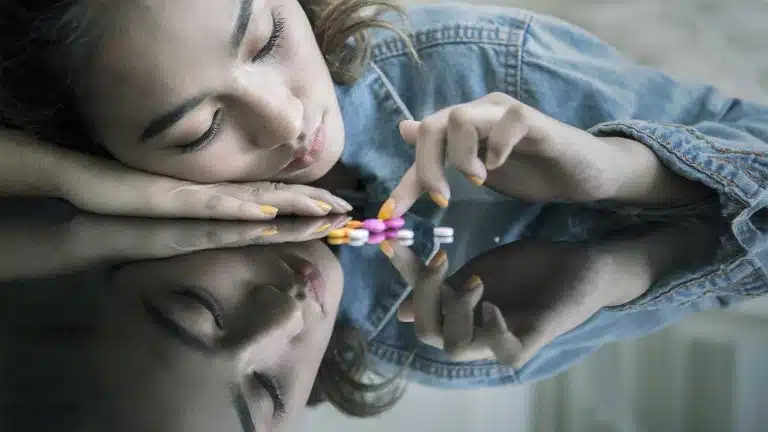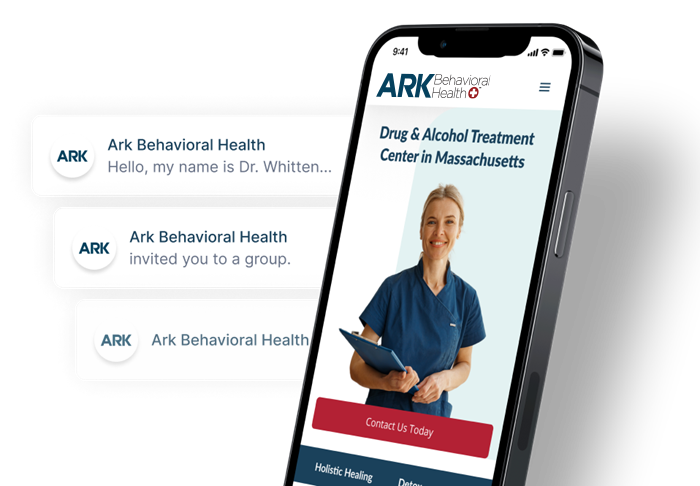Polysubstance Abuse | Overview & Treatment

Drug abuse occurs when you use a legal drug (such as alcohol or prescription medication) in a manner not recommended by your healthcare provider. It also occurs when you use any illegal drug (such as cocaine or heroin).
All forms of drug abuse harm your health. However, polysubstance abuse is especially dangerous.
What Is Polysubstance Abuse?
Polysubstance abuse means abusing two or more drugs at the same time or within a short period. It can involve any type of drug use. However, the drugs most commonly involved in polysubstance abuse are depressants and stimulants.
Depressants (also called “downers”) are drugs that slow down your central nervous system and make you feel relaxed. They include:
- alcohol
- opioids, such as heroin, oxycodone (OxyContin), and hydrocodone (Vicodin)
- benzodiazepines, such as alprazolam (Xanax), clonazepam (Klonopin), and diazepam (Valium)
Stimulants (also called “uppers”) are drugs that speed up your central nervous system and make you feel energized. They include:
- cocaine
- methamphetamine
- ecstasy (MDMA)
- prescription ADHD medications like dextroamphetamine/amphetamine (Adderall) and methylphenidate (Ritalin)
Other substances that are often mixed with other drugs include:
- cannabis (marijuana)
- hallucinogens, such as LSD and psilocybin mushrooms (“shrooms”)
- nicotine
- antidepressants
- inhalants, such as paint thinner, glue, and whipped cream dispensers (“whippets”)
Why Do People Mix Drugs?
Many people mix drugs to achieve a more intense “high” or to self-medicate mental health disorders like depression and schizophrenia.
Others do it to offset the effects of certain prescription or illicit drugs. For example, they might use a depressant (such as heroin) to decrease the stimulating effects of cocaine.
In addition, some people mix drugs unintentionally. For instance, they might drink alcohol without realizing it interacts negatively with a prescription drug they’re taking. They may also buy a street drug that’s secretly been laced with another drug.
Signs Of Polysubstance Abuse
A person who’s struggling with polysubstance abuse may:
- withdraw from friends and family members
- lose interest in activities once enjoyed
- fall behind at work or school
- experience mood swings or personality changes
- experience problems with cognitive function, such as trouble concentrating or memory loss
- act secretive or suspicious
- have bloodshot eyes, unexplained marks, sudden weight loss, or other appearance changes
- experience sudden changes in sleeping and/or eating habits
- frequently borrow or steal money
Health Risks Of Polysubstance Abuse
Polysubstance abuse increases your risk of various health problems. The problems depend on the specific substances involved.
Risks Of Mixing Depressants
For example, if you mix multiple depressants, you may experience heart damage, brain damage, or life-threatening drug overdose. Common signs of a depressant-related overdose include:
- respiratory depression (slow, troubled breathing)
- slow heart rate
- nausea
- confusion
- loss of consciousness
Risks Of Mixing Stimulants
Similarly, if you mix multiple stimulants, you may experience side effects like dangerously high blood pressure, brain damage, liver damage, heart attack, stroke, or life-threatening overdose. Common signs of a stimulant-related overdose include:
- fast breathing
- fast heart rate
- chest pain
- increased body temperature
- seizures
Risks Of Mixing Stimulants & Depressants
In addition, if you mix depressants with stimulants, the drugs’ opposing effects can wreak havoc on your body. You may experience breathing problems, heart problems, loss of consciousness, or other issues.
Also, because the drugs can cancel out each other’s effects, you may need higher doses of each to feel the desired high. This significantly increases your risk of overdose.
Substance Use Disorder
Finally, no matter what drugs you mix, polysubstance abuse often leads to drug addiction (also called substance use disorder). The most common signs of drug addiction include:
- frequent drug cravings
- tolerance (needing increasingly higher or more frequent doses of a drug to feel the desired effects)
- physical dependence (feeling unable to function normally when you don’t use drugs)
Treatment Options For Polysubstance Abuse
Like all types of substance abuse, polysubstance abuse is treatable. If you or a loved one is struggling, seek help at an addiction treatment center.
When you enter the substance abuse treatment program, a team of healthcare providers will create your personalized treatment plan. Depending on your needs, the plan may include treatment services such as:
Medical Detox
Polysubstance abuse often leads to addiction and physical dependence. When you’re physically dependent on a drug and stop taking it too suddenly, you may experience unpleasant withdrawal symptoms like anxiety, shaking, sweating, and trouble sleeping.
During medical detox, your treatment team will help you avoid or decrease withdrawal symptoms by:
- ensuring you quit the drugs slowly and safely
- prescribing medications to ease certain withdrawal symptoms, such as anti-anxiety medications or sleep aids
- monitoring your vital signs and withdrawal symptoms
- helping you get adequate nutrition, sleep, and relaxation
Medication-Assisted Treatment (MAT)
If you’re recovering from an addiction to alcohol, opiates, or nicotine, your doctors might prescribe medications to make recovery easier. These medications may include:
- acamprosate, which reduces alcohol cravings
- methadone, which reduces opioid cravings and withdrawal symptoms
- bupropion, which reduces nicotine cravings
Cognitive Behavioral Therapy (CBT)
Cognitive-behavioral therapy (CBT) is a type of therapy that helps you change unhealthy behaviors.
During CBT for polysubstance abuse, your therapist will help you identify your triggers. Triggers are people, places, or other stimuli that make you want to engage in drug or alcohol use. The therapist will then teach you ways to deal with those triggers, such as:
- deep breathing
- meditation
- journaling
CBT can also help you manage any underlying mental health issues that contributed to your polysubstance use.
To learn more about treatment options for polysubstance abuse, please contact an Ark Behavioral Health specialist. We operate both inpatient and outpatient treatment facilities that develop unique treatment plans based on your needs.
Polysubstance Abuse FAQs
What Happens When You Mix Alcohol With Other Drugs?
It depends on the drug. Alcohol has negative interactions with many different substances, including prescription medications.
For example, if you mix alcohol with central nervous system depressants like opioids or benzodiazepines, you face a greater risk of life-threatening overdose.
Similarly, if you mix alcohol with stimulants like cocaine or Adderall, you may experience aggression, high blood pressure, and heart problems.
Learn more about Mixing Alcohol With Other Substances
What Happens When You Mix Heroin With Other Drugs?
It depends on the drug. For example, if you mix heroin with other central nervous system (CNS) depressants (such as alcohol, opioids, or benzodiazepines), you’ll face a higher risk of slowed breathing, slowed heart rate, and overdose.
In addition, if you mix heroin with a stimulant (such as cocaine or methamphetamine), the drugs may mask each other’s effects. To increase their effects, you may be tempted to use a larger amount of one or both drugs.
This behavior significantly increases your risk of overdose and addiction.
Learn more about Mixing Heroin With Other Substances
Can You Take Xanax With Other Drugs?
Xanax may cause serious or dangerous interactions with certain other types of drugs as well as alcohol, even when taken at the proper dosage.
Learn more about Mixing Xanax With Other Substances
Is It Safe To Mix Gabapentin & Tramadol?
It is not safe to mix gabapentin with tramadol. Since both are CNS depressants, taking them together can amplify the side effects of each of the substances. Mixing the two substances can increase the chance of dizziness, drowsiness, and trouble concentrating.
Learn more about Mixing Gabapentin & Tramadol
Is It Safe To Mix Gabapentin & Adderall?
If used properly, Adderall and gabapentin are not known to interact with one another. However, these two drugs do have opposition effects in that the amphetamines in Adderall can increase one’s risk of having a seizure, potentially reducing the overall effectiveness of gabapentin.
Learn more about Mixing Gabapentin & Adderall
Can You Mix Adderall With Effexor?
Adderall and Effexor should not be mixed together. This drug interaction can lead to intense side effects and an increased risk of serotonin syndrome, overdose, and addiction.
Learn more about Mixing Adderall & Effexor
What Happens If You Take An SSRI & Use MDMA?
MDMA will tend to be much less potent when used with SSRIs, making it much harder to get high.
However, you may be at risk of serotonin syndrome, your body temperature may increase to dangerous levels, and you may still experience comedown symptoms even if you didn’t get high using this drug combo.
Learn more about Mixing MDMA & SSRIs
Is It Safe To Take Pre-Workout On Antidepressants?
Pre-workout supplements that contain tyrosine may be dangerous to take while on MAOI antidepressants. If you are on a different antidepressant or taking other pre-workout supplements, talk to a healthcare professional before starting a regimen.
Learn more about Mixing Antidepressants & Pre-Workout
Written by Ark Behavioral Health Editorial Team
©2024 Ark National Holdings, LLC. | All Rights Reserved.
This page does not provide medical advice.
Centers for Disease Control and Prevention - Polysubstance Use Facts
Substance Abuse and Mental Health Services Administration - Medication-Assisted Treatment (MAT)
United States National Library of Medicine - Polysubstance use: diagnostic challenges, patterns of use and health


Questions About Treatment?
Ark Behavioral Health offers 100% confidential substance abuse assessment and treatment placement tailored to your individual needs. Achieve long-term recovery.
100% confidential. We respect your privacy.
Prefer Texting?
Our friendly support team is here to chat 24/7. Opt out any time.







 Learn More
Learn More








